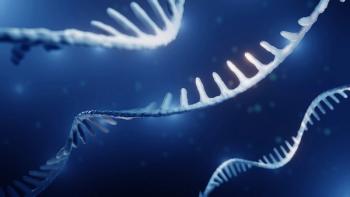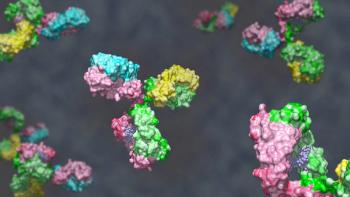
- BioPharm International-09-02-2010
- Volume 2010 Supplement
- Issue 7
Single-Use Bioprocessing Equipment
To assess current trends in single-use bioprocessing equipment, BioPharm International turned to Mani Krishnan, director, Mobius single-use processing systems, Millipore Corporation; Paul Priebe, director, fluid management technologies, Sartorius Stedim Biotech North America; Brandon L. Pence, associate director, market management; Thermo Fisher Scientific; and Richard Mirro, product manager, New Brunswick Scientific.
Q: Single-use equipment continues to make strong inroads in bioprocessing. What application areas are currently growing the fastest?
Krishnan: We are seeing strong growth across all of our product lines. We are seeing a substantially higher level of interest in applications such as tangential flow filtration, final formulation and filling, and mixing.
Priebe: The fastest growing application segment of single-use systems is in downstream processing, primarily for pool conditioning steps between columns. The proliferation of mixing technologies, sensor technologies, and the general overall comfort level of the end user community with single-use systems are all contributors to this trend. The financial drivers for these applications also are very strong (higher facility capacity and lower investment in CIP/SIP and validation) and we are seeing implementation in both green field facilities as well as retrofits.
Pence: We have seen contract manufacturing organizations gravitate toward single-use systems rapidly and appreciate many benefits, such as the time savings associated with eliminating CIP/SIP process in traditional bioreactors. Also, vaccine manufacturers are rapidly incorporating single-use systems as a means of driving down costs and regionalizing manufacturing.
Mirro: The integration of single-use equipment into both research and production facilities has grown substantially over the last several years. However, because of the reduction in validation costs that single-use technology affords, the largest growth area has been in cell culture, specifically for the production of vaccines and antibodies.
Q: Many end users are concerned that adopting single-use technologies may require reliance on a single source. How big a risk does this pose and do equipment manufacturers offer any guarantees to reduce this risk?
Krishnan: Most large manufacturers of single-use equipment do have strategies in place to mitigate this risk, with either multiple manufacturing or storage sites. They also have developed detailed plans for their own key raw material suppliers. It is however important to recognize that the risk of single sourcing exists with all products, not just single-use equipment. Critical filters, chromatography media, process excipients, and cell culture media and additives, generally are single-sourced because of the substantial effort involved in developing and validating multiple cell culture and purification processes. Therefore, it is important to understand what the true risks are and develop rational and implementable risk-mitigation strategies.
Priebe: Security of supply is a major topic that end users must confront when implementing single-use technology. The transition to single-use systems is very much like an outsourcing exercise because the drug manufacturer becomes reliant on suppliers to run his process. This burdens the drug manufacturer's procurement and supplier quality functions to examine the security of supply risk-mitigation strategies within a single supplier and to consider the qualification of a second source when that is possible. Each single-use supplier has different strategies, and it is up to the end user to determine if they are satisfied that the risk of supply interruption is properly managed.
Pence: Assuring supply is a key element to end users incorporating single-use systems into bioproduction processes. A number of elements can off-set this, including the establishment of redundant manufacturing sites and long-term supply agreements. As such, while concerns exist over being single-sourced on any element of the bioprocessing system, measures can be taken to minimize the impact and ensure continuity in production.
Q: Another area that presents challenges for disposables is large-scale chromatography. Does the cost involved-particularly with Protein A columns-make single-use columns prohibitive?
Krishnan: That depends on the number of times the column with that batch of Protein A or any other media is used. For a molecule in early-phase clinical trails, one may be able to make a case that running cleaning validation studies to operate a column for 5–10 batches is not very economical. However, for a drug that is produced commercially in 100 or so batches per year, single-use technology will be difficult to justify. The same is true for all downstream purification technologies.
Priebe: Single-use membrane chromatography is already well established for flow-through polishing applications and the economic drivers are very strong. However, the cost of Protein A makes it unlikely that this capture step will ever be truly single use. One could imagine columns being campaigned and discarded after a campaign is complete, but I don't think anyone thinks of this as single-use system.
Q: To what extent is cost a factor in making decisions about whether or not to implement single-use technologies? In which applications do you think disposables make the most economic sense?
Krishnan: More than cost, the reluctance to implementing single-use systems appears to be coming from the availability of legacy stainless steel equipment. Certainly in areas where process bottlenecks are present, justifying the migration to single-use technologies is relatively straightforward. For a facility that runs multiple manufacturing campaigns of different drugs, adoption of single-use technologies clearly provides them enhanced flexibility, product safety and, in some cases, better capacity utilization. The adoption of single-use systems is now not really limited by application but by scale. There are limits as to how big the single-use containers are going to get. Beyond that scale, we need to develop better ways to operate in a single-use mode without necessarily going bigger.
Priebe: Cost is the number one driver toward single-use technologies. Of course, the elements of a cost calculation can be very complex. There are straight cost of goods models, but other cost drivers are not so straightforward. Time savings on a project, reduced investment risk, and increased capacity of an existing facility are examples of cost savings that may be hard to quantify. The applications where single-use systems make the most economic sense generally are in sterile operations where the risk of cross contamination is the greatest. Here the capital and implementation costs of the CIP/SIP facilities are eliminated, as well as the ongoing cost of performing and verifying these operations. Periodic revalidation efforts also are eliminated.
Pence: Although performance was critical when single-use systems first emerged, cost is an increasingly important factor in the selection and use of single-use technology. Cell culture applications (e.g., single-use bioreactors) appear to be less cost sensitive compared to mixing applications, which can vary on cost sensitivity based on the material being mixed.
Q: One of the challenges with implementing single-use technologies has been sensors. Where do we stand with that today?
Krishnan: Many companies are making some headway in this field. Although there are technologies coming of age for use in the bioreactor for measuring pH and dissolved oxygen, reliable sensor technologies for measuring pH, flowrate, optical density are still in early development. It is only a matter of time.
Priebe: This is an area of a lot of innovation and development, but the supplier base is not there yet. We are still in the infancy of single-use sensor technology for non-cell culture applications.
Articles in this issue
over 15 years ago
IT, Automation, and Process Controlover 15 years ago
Downstream Processingover 15 years ago
Cell Culture Mediaover 15 years ago
Fermentation and Cell Culture Equipmentover 15 years ago
Laboratory Products and Equipmentover 15 years ago
Outsourcingover 15 years ago
BioPharm International, September 2010 Supplement (PDF)Newsletter
Stay at the forefront of biopharmaceutical innovation—subscribe to BioPharm International for expert insights on drug development, manufacturing, compliance, and more.




